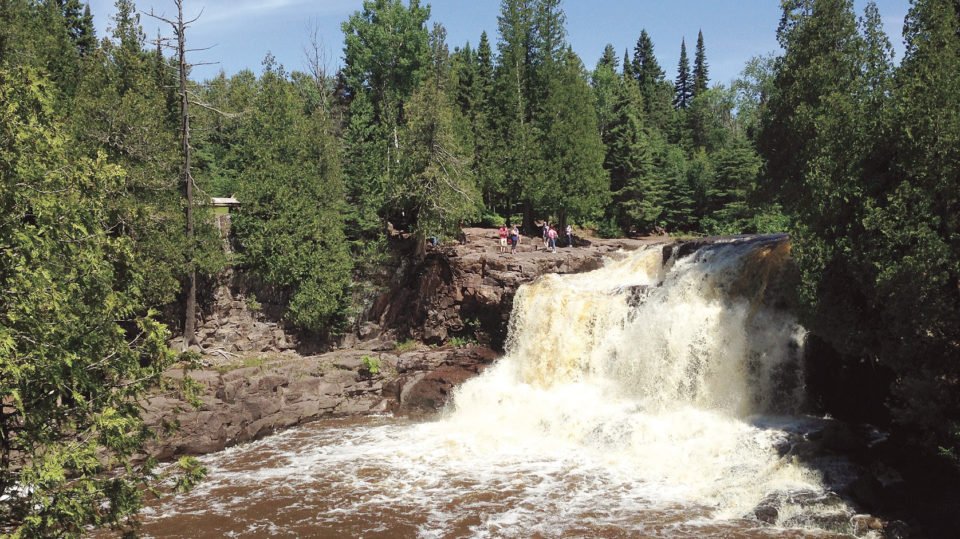With five waterfalls, lakeshore and numerous hiking trails, it is easy to see why Gooseberry is Minnesota’s most-visited state park. Of the North Shore’s eight state parks, Gooseberry is the closest to the Twin Ports, and thus gets the nickname “The Gateway to the North Shore.” While Gooseberry Falls is often on the list of must-see places for first-time visitors to the North Shore, the park’s iconic draw makes it a memorable stop for both new and long-time visitors.
Gooseberry Falls’ history as a state park began when Minnesota State Legislature moved to preserve the area as a park in 1933, and when the Civilian Conservation Corps began to develop the park in 1934. For seven years, young men seeking work during the Great Depression constructed numerous trails, buildings, and the emblematic stone retaining wall, descriptively dubbed the “Castle Wall.” The CCC’s work paved the way for Gooseberry Falls to become what it is today: Minnesota’s best-loved state park.
For those looking to take a hike at Gooseberry Falls, the park offers several different trails at different distances and activity levels. A 1-mile, wheelchair-accessible trail leads from the visitor center to a view of the Upper Falls. A popular short hike is the Falls Loop, which follows trails on both sides of the river and crosses over three bridges to give hikers spectacular views of the Upper, Middle, and Lower Falls. The Falls Loop is a great option for visitors who want to get a quick taste of Gooseberry Falls and see some of its most impressive sites. For those wanting to get farther in the woods, the Fifth Falls hike is a 2-mile loop to the—you guessed it—fifth set of waterfalls in Gooseberry Falls State Park. Hikers follow the Gooseberry River, and can keep an eye out for potholes and caves along the river.

Apart from waterfalls, Gooseberry Falls is also home to the Picnic Flow, an expansive area of shoreline at the mouth of the river. A hiking trail starting at the Middle Falls follows the Gooseberry River down to the shoreline and the Lakeview Shelter, a picnic shelter constructed by the CCC that can be rented for events. (There is also vehicle access to the Lakeview Shelter and lakeshore through the campground.) Visitors can spend time exploring the rocky lakeshore, and the Picnic Flow area makes a great place to stop and take a break after a day of hiking.
While interpretive events are currently on hold, it turns out there really is an app for everything, including Gooseberry Falls. For those who miss the events and interpretive exhibits of the visitor center, the free Gooseberry Falls Go app from the Minnesota DNR gives users a wealth of information about the park, including the park’s natural and human history, the wildlife in the park, and ideas for trails to explore. Users can learn to identify different rocks and trees, and can even do a virtual interpretive hike.
Since Gooseberry Falls is extremely popular, it is recommended that visitors stop by the park at off-peak times to spend more time enjoying nature and less time waiting for a parking spot. If possible, plan to visit on a weekday and avoid visiting the park on summer weekends and holidays. Early morning or later evening hours make great times to visit, and visiting during off-peak months like April and November will mean getting to enjoy more of the trails to yourself. The park is open daily from 8 a.m.-10 p.m. Parking at the visitor center is free; vehicle passes are required for the campground and Lakeview Shelter. Currently, the 24-hour access portion of the Visitor Center with restroom access is open, while the gift shop and interpretive center remain closed due to the pandemic. Updates will be posted on the Gooseberry Falls State Park page of the Minnesota DNR website.




